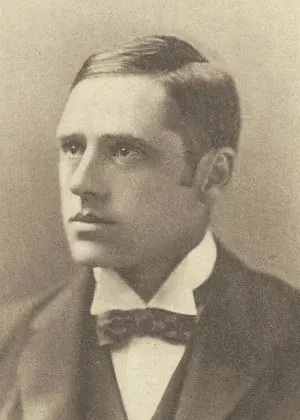Biography of Banjo Paterson

| date | place | |
|---|---|---|
| born | February 17, 1864 | New South Wales |
| died | February 15, 1841 | New South Wales |
Andrew Barton (Banjo) Paterson, born on February 17, 1864, near Orange, New South Wales, was a multifaceted figure—poet, solicitor, journalist, war correspondent, and soldier. Growing up in the bush, he developed a deep affinity for horses, which later inspired his renowned equestrian ballads. His father, a lowland Scot, migrated to New South Wales around 1850. Paterson's early education included lessons from a governess, followed by attendance at the bush school in Binalong. He later studied at Sydney Grammar School, where he excelled academically and matriculated at the age of 16. Although he initially failed a University of Sydney scholarship exam, he pursued a legal career, completing articles of clerkship and being admitted as a solicitor in 1886. For the next decade, he practiced law in partnership with John William Street. In the social and sporting scene of Sydney, Paterson was a notable figure. Described as a tall man with a finely built, muscular body, he was an accomplished horseman, avid tennis player, and skilled oarsman. Paterson's keen interest in poetry was nurtured by his widowed grandmother, Emily May Barton, during his schooldays. His father had previously published verses in the Bulletin, and Paterson began writing poetry as a law student. Adopting the pen name "The Banjo" (inspired by a family racehorse), Paterson became part of the Bulletin's literary circle in the 1890s. His friendships with E. J. Brady, Victor Daley, Frank Mahony, and others defined this period. By 1895, Paterson's ballads like "Clancy of the Overflow" and "The Man from Snowy River" gained immense popularity, leading to the publication of his collection, "The Man From Snowy River, and Other Verses," in October of that year. The title poem had already achieved widespread acclaim in 1890. While holidaying in Queensland in 1895, Paterson penned "Waltzing Matilda," Australia's iconic folk song. His travels through the Northern Territory and contributions to various publications further solidified his reputation. Paterson's pivotal journalistic opportunity arose during the South African War, where he served as a war correspondent for the Sydney Morning Herald and the Melbourne Age, later also for Reuters. Returning to Australia in 1900, Paterson briefly sailed to China as a roving correspondent before visiting England. In 1902, he published "Rio Grande's Last Race, and Other Verses" and eventually decided to leave his legal practice. Paterson married Alice Emily in 1903 and served as the editor of the Sydney Evening News for a brief period. Post-1908, Paterson delved into pastoral ventures, briefly trying wheat farming. With the outbreak of World War I, he sailed to England but was unsuccessful in covering the fighting in Flanders. Paterson drove an ambulance in France and, as an honorary vet, made multiple voyages with horses. He served in the Middle East and returned to Australia in 1919. Paterson resumed journalism after the war, contributing to publications like the Sydney Mail and Smith's Weekly. In 1922, he became the editor of the Sydney Sportsman, a racing journal. By 1930, he retired from active journalism, devoting his time to creative writing. A celebrated figure in Sydney, Paterson's whimsical children's book, "The Animals Noah Forgot," and other works like "Collected Verse" (1923) further enriched his literary contributions. Paterson continued writing and broadcasting until his death on February 5, 1941. Posthumously, he received the honor of C.B.E. His impact on Australian literature, capturing the essence of the bush and its people, remains enduring. Vance Palmer aptly remarked, "He laid hold both of our affections and imaginations… it would not only have been a poorer country but one far less united in bonds of intimate feeling, if he had never lived and written."
Feel free to be first to leave comment.